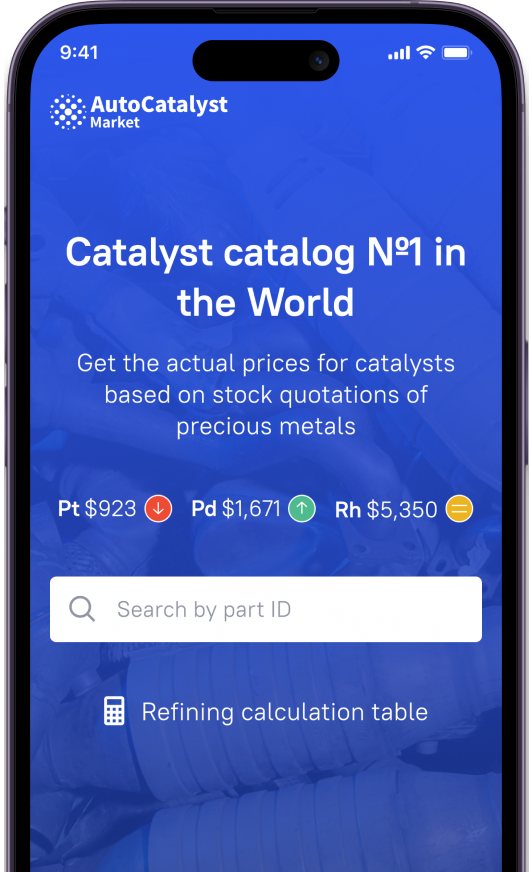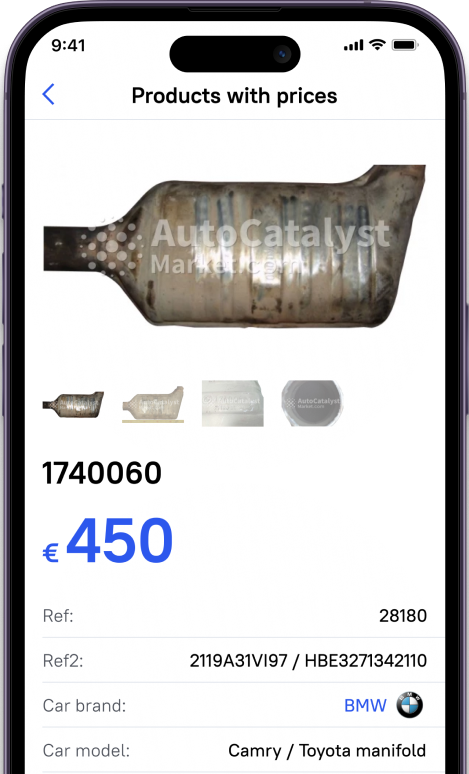- Factors Affecting Pricing
- Current Metals Market Trends
- Converter Type
- How much precious metal is in a catalytic converter?
- What catalytic converters are worth the most for scrap?
- Which Catalytic Converters Have The Most Platinum?
- How much can I get for my old catalytic converter?
- What's my catalytic converter worth?
- How much money can I get for my catalytic converter?
- Who Pays The Most For Catalytic Converters?
Even upon reaching the end of its functional life, a catalytic converter retains inherent value, transcending its initial purpose. By scrutinizing the factors affecting pricing and current metals market trends, our exploration seeks to unveil how much a used catalytic converter is worth and the foremost entities offering optimal compensation for these invaluable recyclable assets.
Factors Affecting Pricing
To understand how much is a catalytic converter worth in scrap we need to take a look at factors influencing the pricing. Catalytic converters of different types contain various amounts of precious metals such as Platinum (Pt), Palladium (Pd), and Rhodium (Rh). These are precious metals of the platinum group that are hard to develop in nature, hence it is important to retrieve them from used catalytic converters. The amount of each of those elements is the first and foremost factor influencing the price, which you can reveal in percentage via recycling and then it comes down to a more accurate price estimation by matching the prices from metal markets.
Current Metals Market Trends
Knowing current metals market trends allows us to understand the worth of used catalytic converters. The market demand for the elements correlates with many industries that have an application for them, such as medicine, jewelry, and the automotive industry with catalytic converters manufacturing. Therefore, precious metals exchange markets reflect upon the supply and demand for Pt, Pd, and Rh. Online platforms such as AutoCatalystMarket allow you to stay in touch with the trends and price updates.
Converter Type
Catalytic converters encompass various types, each engineered for specific vehicular functions. Hence the inclusion of the element and the amount depends on the purpose of a catalytic converter and the type:
- Two-way Converters: Primarily target hydrocarbons and carbon monoxide emissions.
- Three-way Converters: Most common in gasoline-powered vehicles, they reduce not only hydrocarbons and carbon monoxide but also nitrogen oxides.
- Diesel Oxidation Catalysts: Designed for diesel engines, these converters focus on mitigating hydrocarbons and carbon monoxide emissions.
The quantity of precious elements – Platinum (Pt), Palladium (Pd), and Rhodium (Rh), varies among these converter types. Three-way converters typically contain the highest concentrations of these elements due to their multifunctional role, while two-way converters generally possess the least. The selection of a converter type aligns with specific engine requirements; gasoline-powered vehicles often utilize three-way converters, whereas diesel engines commonly employ diesel oxidation catalysts.
How much precious metal is in a catalytic converter?
The precise amount of precious metals in a catalytic converter can vary significantly based on factors like the converter's size, make, model, and manufacturing specifics. However, here's a generalized breakdown:
- Platinum (Pt): A typical catalytic converter may contain around 2-5 grams of platinum. Some luxury car brands like Mercedes-Benz or BMW might have converters with a slightly higher amount of platinum due to their emphasis on performance and emission standards.
- Palladium (Pd): Palladium content ranges roughly from 2-7 grams in a converter. Vehicles from brands like Ford or Toyota might have a higher palladium content, as they often use this metal more extensively in their converters for cost-effectiveness.
- Rhodium (Rh): Rhodium is the most valuable of these metals and hence found in smaller quantities, generally between 0.1-0.5 grams in a catalytic converter. Cars with higher emission standards or those focused on performance might use more rhodium, for example, certain models from Porsche or Audi.
These figures can fluctuate widely, and specific models or years within a brand might vary significantly in the precious metal content due to advancements in technology, emission standards, and cost considerations.
On average, the percentage composition in a catalytic converter might hover around 40-50% platinum, 30-40% palladium, and 10-20% rhodium. However, these percentages are rough estimates and can differ based on the manufacturer's design and objectives for emissions control.
Keep in mind that the actual amounts can vary and may not align exactly with these estimates due to differences in car models, technological advancements, and variations in emission standards across different regions and timeframes. Therefore the actual quantity is revealed only through a precise analysis of recycling stages.
What catalytic converters are worth the most for scrap?
Let us have a list of expensive car brands that have the most worth for scrap catalytic converters depending on their specifics and purpose:
- Three-way catalytic converters, commonly installed in gasoline engine cars (Toyota, Honda, Volkswagen, BMW), often contain a higher quantity of these valuable metals due to their multifunctional capabilities in reducing emissions.
- Luxury car brands (Mercedes-Benz, Audi, Lexus, or Jaguar) frequently utilize catalysts with a broader application of platinum (Pt), palladium (Pd), and rhodium (Rh) to comply with strict emission standards while maintaining performance.
- In hybrid vehicles like the Toyota Prius, Honda Insight, Ford Fusion Hybrid, or Lexus ES Hybrid, aiming for cleaner emissions, sometimes more advanced converters are installed. These may contain a higher amount of precious metals compared to regular gasoline-powered cars, further increasing their value as scrap.
- Cars such as the Subaru Impreza WRX STI, Mitsubishi Lancer Evolution, or BMW M3 are known for their high-performance characteristics. They might have converters with more precious metals due to specific manufacturing technologies, especially in older models, making these converters more valuable for recycling.
Which Catalytic Converters Have The Most Platinum?
The history of catalytic converters began in the 1950s and 1960s, but widespread implementation occurred in the 1970s and 1980s in response to increasingly stringent environmental regulations regarding emissions of harmful substances from automobiles. Initially, platinum and rhodium were most commonly used in the first automotive catalytic converters. Platinum and rhodium were preferred due to their effectiveness in transforming harmful emissions from car engines into less dangerous compounds. They exhibit high catalytic activity and prove efficient under high-temperature conditions, which is crucial for the catalytic process in engines.
Palladium was also used but to a lesser extent than platinum and rhodium. However, over time and with advancements in catalytic converter technology, palladium became more widely used due to its more affordable cost compared to platinum and rhodium.
How much can I get for my old catalytic converter?
Because platinum was more prevalent at that time, it was among the first elements used in early automotive catalytic converters. Therefore, if you have a car from the mid-1970s or early 1980s, it is more likely that platinum predominates in its catalytic converter.
What's my catalytic converter worth?
Determining the value of used catalytic converters requires a detailed recycling process. This involves several steps, including XRF analysis, which provides a percentage breakdown of platinum, palladium, and rhodium from a sample. However, this analysis offers an approximate estimation because these metals are not yet in pure form. Initially, a price per weight (kg) is determined for the entire batch.
The refining stage is crucial in establishing the current price. Here, the elements are purified, allowing for a precise valuation. Matching these refined metal prices with the current rates in the precious metals market is essential. Market prices fluctuate, reflecting the supply and demand dynamics of these elements, which find applications across various industries. Staying updated with these market rates is key to accurately assessing the value of catalytic converters.
How much money can I get for my catalytic converter?
To maximize the value of your catalytic converter, start by researching the manufacturer of your converter and the specific car model it belongs to. Some car brands use Original Equipment Manufacturer (OEM) catalysts, while others opt for converters from third-party manufacturers to ramp up production.
Understanding the two primary avenues for selling used catalytic converters is crucial. Traditional scrapyards offer a conventional option but often come with downsides, including potential involvement in illegal activities related to stolen converters and lower prices. Alternatively, consider leveraging online platforms with reputable buyers operating at larger scales. These platforms typically yield higher margins due to increased turnover, offering a more secure and potentially more lucrative selling option for your converter.
Who Pays The Most For Catalytic Converters?
As mentioned earlier, online platforms like AutoCatalystMarket offer valuable options for selling used catalytic converters. This website provides a range of useful features. With a library boasting over 25,000 units and an image database aiding in converter identification, it simplifies the process for you. You can search for your specific converter using serial numbers, car brands, or catalyst manufacturers.
When you're ready to sell, the site presents a list of reputable buyers in your area. By selecting your region, you'll find a list of local buyers available for your converter.
These buyers handle the complexities of catalytic converter recycling, determining the current price based on precious metals market exchange rates and the actual quantitative content of Pt, Pd, and Rh in your converter.
The advantages of using ACM include:
- Remote price estimation: Avoid visiting scrapyards by estimating catalyst values remotely.
- Real-time pricing for precious metals: Stay updated on current rates for Pt, Pd, and Rh, ensuring accurate converter pricing.
- Connecting supply and demand: Serving as a link between market offers and requirements.
If you ask yourself “How much can I get for my catalytic converter” – leverage AutoCatalystMarket to estimate the price and maximize the value of your used catalytic converter from your smartphone, allowing buyer companies to handle the process seamlessly on your behalf.
















































